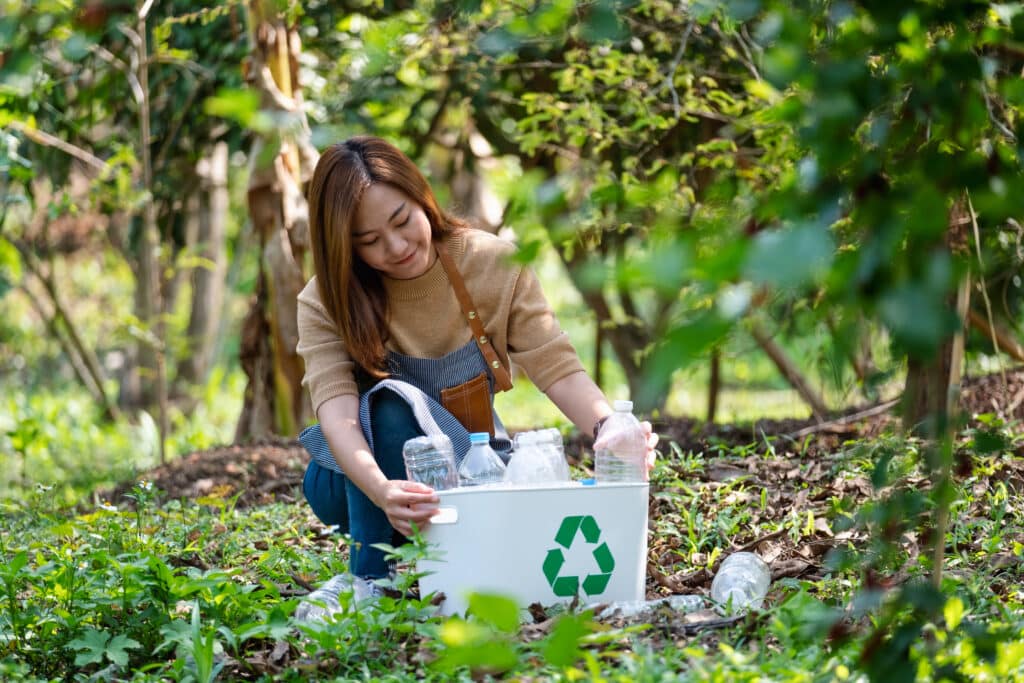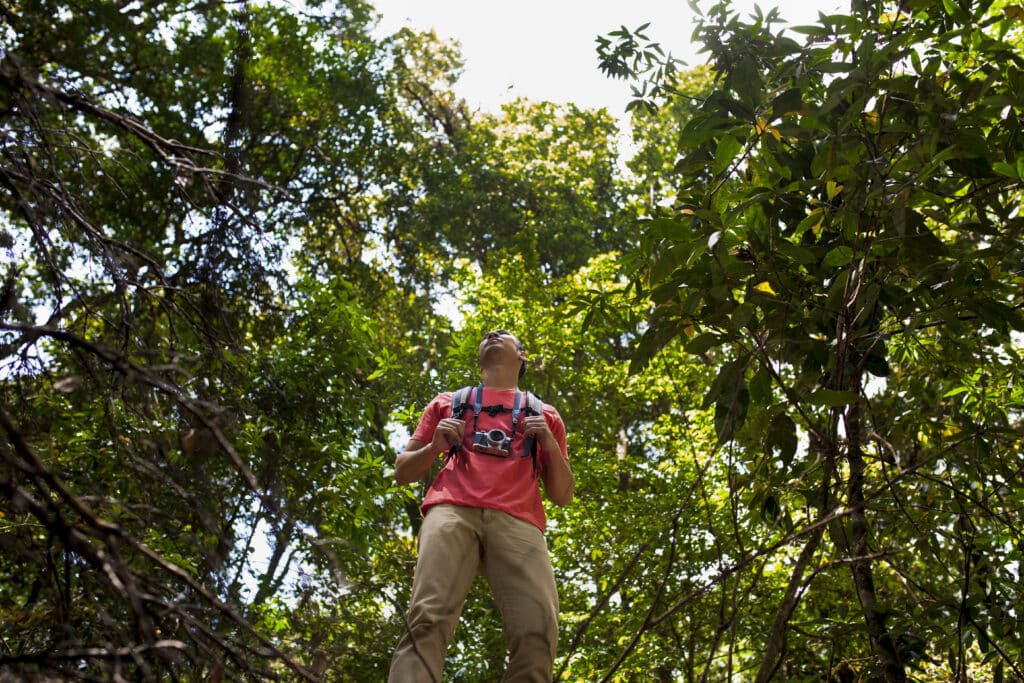
Why is it crucial to minimize your carbon footprint while travelling? Well, there are many reasons. Let’s go over them and discuss a few eco-friendly travel tips.
We all need to help reduce the negative effects of tourism on the environment. By selecting more environmentally friendly options for travel, lodging, and activities, you can lessen your environmental impact.
Eco-travel can help safeguard a region’s rich cultural legacy. Many popular tourist destinations have delicate ecosystems that are very vulnerable to sloppy tourism. You can contribute to the preservation of these places and ensure that they are accessible to future generations by making sustainable choices in your travel plans.
When you travel in an eco-conscious way, you might inspire other travelers to do the same. The more people make sustainable travel decisions, the more they are supporting local companies and communities.
Tourism and travel contributes significantly to the world’s greenhouse gas emissions, this is why
Eco-travel is important as it helps in the fight against climate change. You can help to lessen your impact on climate change by minimizing your carbon footprint when you travel.
Eco-friendly travel tips for your eco-friendly vacation

Tip 1
The first step in planning your eco-friendly holiday is researching your destination. Look up conservation initiatives in the area, and research local cultures. By doing your research beforehand, you can make better decisions that could reduce your negative environmental impact when travelling. Knowing about local businesses will help you support the local economy while making sustainable decisions.
Check to see if the area you are planning to travel to has a tourism board with a website. This can be a great way to learn more about your travel destination. Websites like these are often created by the community and can provide you with details on eco-friendly activities, accommodations, and sustainable tourism strategies.
Tip 2
Reading reviews and ratings from other travelers, such as those on travel review websites or blogs, is another way to learn more about your destination of choice. Try searches with the terms like: eco-travel, eco-lodging, sustainable hotel, and enviro-hotel. By reading travel blogs, you can learn from the experiences of other travelers and discover sustainable activities and lodging available at each location.
Tip 3
Research regional non-profits and groups that are involved in sustainable development and conservation. They can offer valuable information about the state of the environment and the steps being taken to protect it. If you’re visiting the Frontenac Arch Biosphere Region, FABN is definitely a resource you’d want to use!
Tip 4
When designing an eco-friendly travel itinerary, it is important to pick eco-friendly transportation options when you can. Choosing environmentally friendly transportation helps reduce carbon emissions.
Consider how you will get to your destination, but also how you will travel once you get there. Electricity is now frequently used to power public transit such as trains, buses, and subways. Electric vehicles also help lower air pollution. When possible, pick airlines and flights with reduced emissions. By using environmentally friendly modes of transportation when you can, you can lessen your carbon impact and advance ethical travel habits.
When you can, choose destinations that are accessible by foot or bicycle once you arrive to reduce the need for transportation. Walking and bicycling are excellent options for transportation because they have no emissions, and they are healthy for you. Now that many cities have bike-sharing systems, it’s simple to borrow a bike for short trips.
Eco-friendly travel tips: Tip 5
When planning your eco-friendly trip, look for green lodging when making your reservations. Energy-efficient lodging uses solar power, recycling, water conservation, or sourcing local goods like organic breakfast. These can lessen the environmental impact of tourism.
Find lodgings with green certifications, such as LEED (Leadership in Energy and Environmental Design) or Energy Star, as one approach to locate energy-efficient accommodations. These certificates show that the building complied with strict energy efficiency and sustainability requirements.
Think of booking a locally owned hotel rather than a large chain hotel. Examples of locally owned hotels are modest inns and eco-lodges.
Tip 6
Being an eco-friendly traveler means avoiding single-use plastics and choosing eco-friendly goods. Plastic bags, straws, and water bottles are just a few examples of single-use items that are bad for the environment and add to the waste issue. They often wind up in oceans and other bodies of water, where they can harm marine life, and take hundreds of years to degrade.
Plan to carry your reusable water bottle, coffee cup, and cutlery. This can really help reduce the volume of plastic garbage produced while travelling. Consider a bamboo toothbrush, reusable cloth shopping bags, and eco-friendly soaps and shampoos as another method to lessen your negative impact on the environment.
Tip 7
When looking for souvenir items to buy, look for ones made of sustainable and natural materials, such as textiles, wood, or pottery. Products made of plastic or other non-sustainable materials should be avoided. Try to find locally created goods, since they frequently have a lower carbon footprint than imports.
Tip 8
Another of our Eco-friendly travel tips is to use technology to cut down on paper waste when planning your environmentally friendly holiday. Digital tools and applications can help you plan and arrange your vacation. You can store all the necessary information on your phone or tablet and access it whenever you need it, saving you the trouble of printing paper copies of your itinerary, flight and hotel confirmations, and maps. Loosing a stack of paper is more likely than loosing your phone, so get rid of that paper!
Thanks to the numerous airlines and hotels that now provide digital check-in and boarding pass options, you can help conserve paper and cut down on trash.
Using digital guidebooks rather than conventional paper ones to decrease paper waste. There are numerous digital guidebook apps that offer details about destinations, including maps, suggestions for hotels and restaurants, and things to do.
Eco-friendly travel tips: activities to keep in mind

Enjoyed our Eco-friendly travel tips? Another part of building an eco-friendly travel itinerary is researching and planning sustainable activities. You can support environmental conservation and preservation when travelling by choosing eco-friendly activities that respect the local environment and culture.
- Tours of nature and wildlife that place an emphasis on environmental protection and conservation.
- Cultural tours that benefit the local and assist the maintenance of customary ways of life.
- Hiking, riding, and kayaking are examples of outdoor activities that reduce the consumption of fossil fuels and foster a connection with nature.
- The opportunity to learn about sustainable agricultural methods and support regional agriculture is provided via agro-tourism and farm stays.
Finding tour operators who are devoted to sustainability, such as those who have earned certification from responsible tourism organizations, is crucial when researching and organizing sustainable activities and tours. While travelling, you may assist the local economy and environment by selecting eco-friendly excursions and activities.
Finally, think about getting experiences rather than tangible goods, such as going on a tour or taking a culinary class to learn more about the local way of life. Making a travel schedule that is environmentally responsible requires supporting local organizations and companies. You can encourage sustainable tourism and support the local economy by opting to eat at restaurants owned by locals, shop at local stores, and stay in locally owned lodgings. This can give you a much more personalized and memorable vacation experience.
Now that you know what you can do to make your travels more sustainable, why not learn more about nature and conservation based activities in the FAB region? Nature and wildlife conservation efforts that provide cultural experiences in the FABN region.





